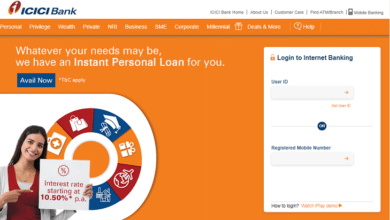Supercharge Your Website: A Blueprint for Exponential Growth

Key Takeaways
- Understand the importance of a well-implemented website for business growth.
- Learn actionable strategies to enhance website performance.
- Discover tools and techniques to drive more traffic and engagement.
- Gain insights from research-backed data for effective web implementation.
Introduction to Web Implementation
In the digital age, a high-performing website is crucial for business success. A well-implemented website attracts visitors and keeps them engaged, driving conversions and growth. Implementing web maintenance services can be a vital component in achieving this growth. Whether you’re running an e-commerce store, a blog, or a corporate website, understanding the ins and outs of web implementation can make a significant difference.
Optimizing Website Performance
Focus on optimizing your website’s performance to kickstart its transformation. A fast-loading site significantly reduces bounce rates and enhances user experience. According to Google’s research, a one-second delay in page load time can lead to a 7% reduction in conversions. Imagine the compounding effect of slow load times on your monthly and yearly revenue. Therefore, taking immediate steps to speed up your site is crucial.
Start by minifying CSS, JavaScript, and HTML files, reducing their size without affecting their functionality. Implement lazy loading for images so they load only when the user scrolls to them. Additionally, consider integrating a Content Delivery Network (CDN) to ensure faster delivery of your site’s content to users globally. CDNs store copies of your site’s static content in multiple locations worldwide, reducing the distance between the server and the user and cutting down load times.
Enhancing User Experience (UX)
Maintaining users’ attention and promoting interaction requires a flawless user experience. Make sure your website is responsive so that users can enjoy the best possible experience on all kinds of devices, from laptops to smartphones. Prioritize intuitive navigation and a clean design that effortlessly guides users to their desired content. Complex menus and cluttered interfaces can deter visitors, causing them to leave your site prematurely.
Furthermore, incorporating interactive elements such as chatbots and personalized content can significantly enhance the user experience, making visitors feel valued and understood. Chatbots can provide real-time assistance, answering common queries and guiding users through complex processes like checkouts or form submissions. Personalized content can make your website feel more relevant and interesting based on user behavior and preferences, which can increase time spent on the site and the chance of transactions.
Content is King
Robust content is the foundation of any prosperous website. It’s crucial to provide content that speaks to your audience, addresses their problems, and adds value. To keep your readers interested, update your blog frequently with educational pieces, case studies, and business news. Engaging content attracts new visitors and encourages return visits, thereby building a loyal user base.
Additionally, utilizing keywords strategically within your content can improve your site’s SEO, helping you rank higher in search engine results pages (SERPs). Tools like the Moz Beginner’s Guide to SEO offer valuable insights into effective keyword strategies. Keep an eye out for long-tail keywords, which can attract highly targeted traffic and frequently have less competition. Make sure your writing strikes a balance between user-centric content production and search engine optimization while also offering your readers real value.
Utilizing Analytics Tools
To measure the effectiveness of your web implementation strategies, leverage analytics tools like Google Analytics. These tools provide invaluable data on user behavior, traffic sources, and conversion rates. Regularly analyzing this data helps identify areas for improvement and allows you to make data-driven decisions, ensuring that your optimization efforts are aligned with user needs and business goals.
For more comprehensive analytics, consider advanced tools that offer deeper insights and customized reports. With the help of these tools, you can monitor the effectiveness of particular ads and adjust your optimization. Advanced analytics can provide segmented data, heatmaps, and even user session recordings, helping you understand how users interact with your site. Through consistent observation and examination of this data, you may optimize your tactics to improve user involvement and stimulate expansion.
Driving Traffic Through Multiple Channels
Your potential for growth may be constrained if you only rely on organic traffic. Diversify your traffic sources by investing in paid advertising, social media marketing, and email campaigns. Each of these channels has its strengths and can complement your overall strategy. Paid advertising, for example, can immediately boost traffic, while social media marketing can help build brand awareness and community engagement.
Collaborate with influencers and create compelling content to share across various platforms. Leveraging influencer partnerships can introduce your website to new, relevant audiences, driving more traffic and potential conversions. Exploring partnerships and guest posting opportunities can also expand your reach, presenting your brand to new audiences and driving more traffic to your website. Think of each channel as a cog in a larger machine, all working together to fuel your website’s growth.
Optimize for Mobile Users
It’s critical to make sure your website is mobile-friendly given the rising popularity of smartphones. Because mobile-friendly websites are given priority by search engines, mobile optimization improves user experience and raises your website’s ranks. Given that mobile devices will account for over half of all website traffic by 2021, mobile optimization is an essential component of web deployment.
Use responsive design, optimize touch interactions, and streamline your site’s layout for smaller screens. Regularly test your site on various devices to ensure consistency and functionality. Mobile users have different needs and behaviors than desktop users, so ensure that your mobile design caters to quick navigation, easy readability, and fast load times. Tools and practices like Accelerated Mobile Pages (AMP) can also significantly improve mobile user speed.
Conclusion
Supercharging your website requires a multifaceted approach, focusing on performance optimization, user experience, content quality, and diversified traffic sources. By implementing these strategies, you can drive exponential growth, ensuring your website becomes a powerful asset for your business. Keep in mind that maintaining an advantage in the cutthroat world of digital marketing requires constant observation and development. The process of creating a high-performing website is never-ending, but with the appropriate approaches, there can be substantial and lasting benefits.




